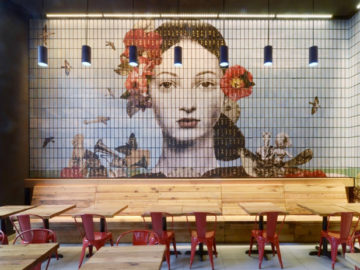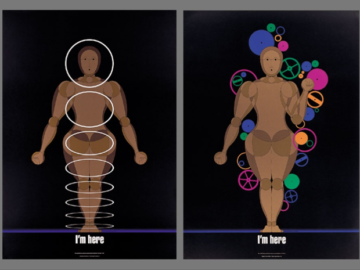 Photographer: Tammy Ruggles | Client: Self-Initiated
Photographer: Tammy Ruggles | Client: Self-Initiated
Photographer – Tammy Ruggles
Tammy Ruggles truly has a unique eye for photography. Her high contrast, black and white images capture the rural tundra of the small-town Tollesboro in Kentucky. As for her style, she says it’s difficult to pin it down because she sees something entirely apart from her viewers. Ruggles is legally blind.
Born with a progressive eye disease known as Retinitis Retinitis Pigmentosa, Ruggles’ retinas are gradually fading over time. She describes it as seeing the world like a photo that is out of focus. However, she has not allowed the disability to deter her from her greatest aspiration: to be a fine art photographer. “I thought it was an impossible dream,” she said. “Photography is a passion, like writing and finger painting. I would do it even if I weren’t compensated.”
For Ruggles, a typical day begins before the 47-inch computer screen in the corner in her suburban living room, answering emails and sending queries to photography websites, literary journals, or art magazines. She then ventures beyond her home with the camera. “Sometimes I will walk close to something to see it better, like a flower or a tree branch, and click the shutter. Other times I will have someone with me that will point out an interesting subject, and I’ll aim my camera in that direction.”
Since she can’t see the settings on her camera or focus a lens, she uses a point and shoot camera set on auto. She post-processes the photos on her computer at home, which has desktop icons that are up to 6 inches tall. The photos are enlarged for better visibility. “The head of a dandelion becomes 2 feet tall on my screen,” she said. “This allows me to view the world I’ve captured but couldn’t see because it was a blur. In a way, photography lets me see the world in a way that I can’t otherwise.”
 Photographer: Tammy Ruggles | Client: Self-Initiated
Photographer: Tammy Ruggles | Client: Self-Initiated
Ruggles was drawn to art early in her life. In high school and college art classes, she became interested in the post-impressionism of Vincent Van Gogh, as well as the black-and-white landscape photographs of Ansel Adams and Alfred Stieglitz’s modernist style. Her own style, described by others as painterly or pictorialism, is derived from her visual impairment. “The simpler the image, the better I see it,” she said. “Many people who have RP will tell you that high contrast is easier for them to see than low contrast.”
She was not always blind. “There was a time I could read regular print, drive a car, and recognize people if they were closer than 10 feet away.” She worked as a social worker until her eyesight began fading. Her dream to become a photography didn’t seem feasible until 2013, when the combination of a point and shoot camera, in-camera processing, and a 47-inch monitor was introduced to the market. “It became a reality.”
For Ruggles, photography is a full-time profession with a part-time pay. She receives a disability benefit, but hopes to one day fully live off her photography. “I do the best that I can with what I have.”
To view and purchase Tammy Ruggles’ work, click here.




